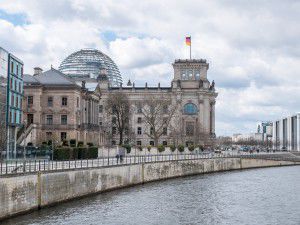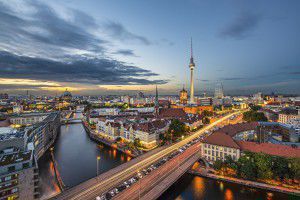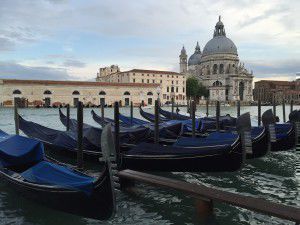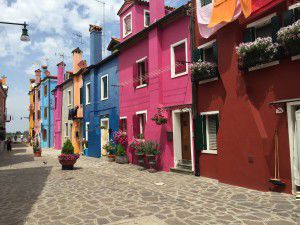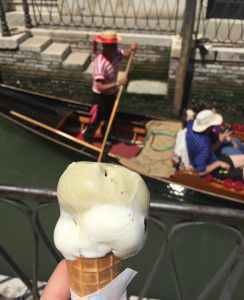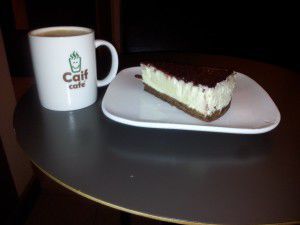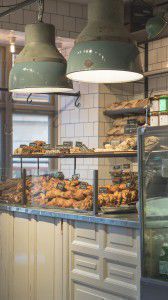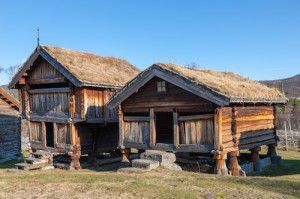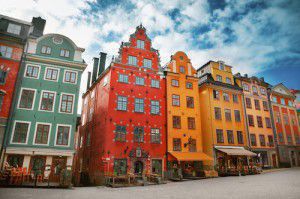A couple of days in Berlin
After volunteering in a hostel in Riga for six weeks, I decided to take the long way home via a series of overnight buses. With everyone raving about how beautiful a city Berlin is, I decided to make it my next stop on my journey home.
It is easy to see why people like it so much.
I stayed in a huge hostel in the Turmstrasse area and this seemed like a really good location to stop in. Just twenty minutes away was the Victory Column, or Siegessäule, which overlooks a large portion of the city. A little further was Potsdamer Platz; the centre is all commercial with cafes and restaurants as far as the eye can see and business reaching high up into the sky from a series of highly polished skyscrapers. But the surrounding area has a lot of history and culture to offer too. Personally the Topography Of Terror, Holocaust Memorial, Friedrichstrasse and Reichstag were the things that grabbed my attention the most. An early evening stroll in the local neighbourhood turned into a several hour stint that saw me leave my hostel, walk the length of Turmstrasse, past the Victory Column, down to the Holocaust Memorial and back on my first night.
There is no one ‘centre’ to Berlin, but it seems most tourists and locals end up at Alexanderplatz. Walking out of the station the first thing you see is the iconic tower that overlooks a pedestrianised area. Walking behind this and into a little blissful shade after a journey on an overheated train was very refreshing. There is a lot to see from here, and I personally headed over towards the galleries and sat under the pillars looking out over the river for a while.
The Zoological Gardens are definitely worth a visit, and if you like zoos and aquariums then it is a must. There’s a very cute windmill of sorts that sits along a section of Budapester Strasse which is worth stopping at to admire.
The Brandenburg Gate was such an impressive sight first hand, you can really understand the sense of power there and the thought of those streets being lined with people waiting to see a glimpse of their leader is both disturbing and breathtaking.
The area around Nordbahnhof was one of my favourite places, full of gardens, interesting architecture, and of course the Berlin Wall Memorial.
The main station, Hauptbahnhof, was also worth looking round, whether you like trains or not. There are so many levels, platforms, different types of train, shops, places to eat and drink, you could spend hours within this huge complex and not get bored.
Of course, one of the best things about Berlin, from my perspective at least, is the cake. Much like Greggs back home in the UK, there is a bäckerei (bakery) wherever you turn, and such a choice of sweet and savoury treats it can be a little overwhelming.
I spent the best part of two days in Berlin and I have to say, it isn’t enough. I could have happily stayed another week and I am still not sure if that would have been enough to have seen everything that I wanted to. A return trip is definitely in order!
Kelly
Planning a trip to Berlin? Remember to learn a little German before you leave with uTalk – or try our free Talk Now demo.
How to greet people from around the world
Have you ever experienced that awkward moment when you go in for a kiss when the other person goes in for a handshake and you end up with a punch in the gut? Here is our guide to greetings around the world so you don’t end up in that awkward situation:
The UK/North America
- If you haven’t met the person before then it’s best to go for a simple handshake.
- If you’re attempting to look stylish, or you’re at an impressive event, then you can kiss them on both cheeks.
- If you are meeting a friend then a friendly hug or a kiss on each cheek is allowed.
South Korea
- The bow is the traditional Korean greeting
- When men are meeting someone they know they shake hands, however this does not happen between different genders.
- Korean women will not shake hands with Western men.
- Western women, however, may offer their hand to a Korean man.
France
- When meeting a girl you can kiss them, one on each cheek.
- Men stick to handshakes.
The Netherlands
- The handshake is very important, you shake everyone’s hand on arrival and again when you are leaving
- When meeting up with a friend it is normal to kiss three times on alternate cheeks.
Argentina
- It is normal to kiss everyone of the cheek, just once and always the right cheek
Thailand
- In Thailand you greet someone with the ‘Wai’, this is when you press your palms together in a prayer pose, and bow your forehead to touch your fingertips. The higher your hands, the more respect you have for the other person.
India
- A typical greeting is when you place your palms together in the prayer position and bow slightly, and say ‘Namaste’.
- However, when Indian people meet a Westerner they will shake their hand.
China
- You no longer have to do the cupped-hand bow; it is now acceptable to do a handshake. If you are in a formal situation, then out of respect you should lower your head.
Inuit
- When they are meeting someone they rub their noses together.
Tibet
- It is very polite to stick your tongue out at someone; it shows you have no evil thoughts.
10 reasons to visit… Venice
We’ve all seen the Italian city of Venice in the movies, but does it live up to its reputation as one of Europe’s most beautiful and historic cities? Amy says yes; here are her ten reasons to check out Venice for yourself.
1. Boats
I think this has to be a very obvious point, as of course Venice and boats go hand in hand. I was rather taken aback by the beauty of the boats, especially the private taxi boats, as they were all immaculate. If you’re landing when it’s still light, get a private taxi from the airport; it is magical and makes you feel like you’re in a James Bond movie cruising along the Grand Canal.
2. Get lost
Once again I think this is quite a popular theme, but honestly just wander about taking little side streets, because you never quite know what you are going to find, maybe a beautiful street, bridge, shop… or possibly a dead end. As long as you have a map with you when you’re ready to head back, you will be absolutely fine. Once you get to grips with the city it is relatively easy to get around and soon you’ll be wandering off to places without even needing any guidance.
3. Churches
The first world that comes to mind when thinking about the different churches in Venice is WOW. There are a vast number of churches across Venice and the ones we went into were simply stunning. We managed to see several, including St Mary of the Friars, where you can see the famous painting Titian’s Assumption of the Virgin, which caused a lot of commotion when it was first revealed. We also saw San Moisè and Santa Maria della Salute, as well as many more. Each church has a different history so you can never get bored of going into different ones.
4. Bridges
There are over 400 bridges in Venice and rather frequently you stumble upon one that’s just beautiful. They vary from concrete to iron; the concrete ones are traditional Venetian bridges, whereas the iron bridges are Austrian.
5. Islands
If you have the time I would definitely recommend hopping across to the different islands. Murano is the closest island, while Burano and Torcello are a little further away but still very easy to get to. We stopped off at Murano, which is famous for its glass, and we were fortunate enough to see the incredibly talented Glass Masters at work. Next was Burano, known for its lace and its colourful houses; this was so the fishermen could spot their house when they were out at sea. Finally we went to Torcello, which is tiny; there are only 15 homes on the island. Sights on Torcello include the Cattedral di Torcella, which was built in AD 1008, and the Santa Foscafe, which is very impressive to look at from the outside.
6. Beauty
I knew Venice would be beautiful, but what I wasn’t expecting was all of the detail that can be seen everywhere, in the churches, the bridges, and even engravings on some streets to represent different districts. Maybe I had rose tinted glasses on, but whenever I thought I had seen something beautiful I rounded a corner and there was something that topped it. It may sound like a cliché but Venice really does take your breath away.
7. Tour
This is an absolute must, because otherwise you can walk past something and have no idea you have passed a major piece of history. The tour means you really get to know Venice and learn about its history and culture, I can’t even begin to describe how much I learnt about the city and how relieved I was that we did a tour. Without it you could be standing in the square where Shakespeare based The Merchant of Venice and have no idea.
8. History
I can honestly say that I had no idea about the extensive history behind Venice, from the several plagues they suffered, to the different Dukes in power and of course Napoleon taking over the city. You definitely get a better feel for the city once you know more about its history, as well as starting to notice different things yourself when walking around, like the different types of bridges I mentioned earlier, or how the Austrians had to have their own cafés as they were not welcome anywhere else. I would read a little about the city before you go, just so you know a little about the Venetians’ background.
9. Food, Drink and Ice Cream
In Italy you expect great pizza and pasta; however Venice is very much based around seafood, although we also discovered an incredible steak restaurant called Vini Da Artur where we had the best steak we have ever eaten. Of course we had pasta and pizza too, but there is really something for everyone. For drinks, I recommend the Hilton Skyline Rooftop Bar for views of Venice and of course Harry’s bar, which originally opened in 1931 and was where the famous Bellini was invented. It is expensive, but just go for one Bellini to say you’ve experienced Harry’s bar, because the atmosphere in there is fantastic. Finally, ice cream was a must for us over the few days we were in Venice, due to it being very hot. There is a different ice cream shop on all of the busy streets, and they do not disappoint. Because you have to have at least one gelato while you’re in Venice, right?
10. St Mark’s Square
We’ve seen it in lots of films and pictures, but you can’t beat going and seeing it for yourself. Stepping into the square, the first thing you notice is how big it actually is. The main attraction – the church – is simply beautiful; the engravings all across the church and the different colours used are stunning. Going inside the church is a must, and you can pay €2 to go to the back of the church. Do it, you’ll see why. All across the square there are intricate engravings in the marble and different statues everywhere. I don’t want to spoil any surprises for anyone wanting to learn the history of the square, you have to go and experience it – and if you’re going with someone special, go at night too as it’s very romantic.
My only warning about Venice is that you do get harassed to buy a selfie stick or to feed the pigeons, so be prepared to say no!
And of course, don’t forget to download uTalk before you leave; even if you don’t have time to learn some Italian in advance, it’s a really useful app to have on your phone when you’re searching for the right word – we used it a lot!
Have you ever been to Venice? What did you think?
Amy
A trip to Riga
At the risk of sounding like a Eurovision host… greetings from Latvia!
I don’t have the sparkly outfit or the slightly dodgy English accent (although some may disagree with that), nor am I looking for my five minutes of fame. So perhaps less Eurovision host, more lazy wanderer.
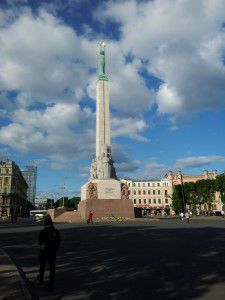 I find myself in the beautiful city of Riga for a few weeks, and after only a few days, I can say it is a good choice with lots to explore.
I find myself in the beautiful city of Riga for a few weeks, and after only a few days, I can say it is a good choice with lots to explore.
Riga has become a ‘must see’ for many a traveller, a mid-point on the popular route between Tallinn and Vilnius.
The time difference is +2 GMT and it’s a little surprising to find the sun rising at 3 in the morning when the evenings draw in much the same time as they do in the UK.
The temperature is actually like the best bits of the UK summer and sometimes hotter, but that can be significantly reduced by the wind.
The currency is the euro, the prices are relatively cheap, the local supermarket is Rimi.
Everything is pretty central and the airport is accessible by little more than half an hour by bus for around 2 euros.
So, that’s the stats and stuff.
So what’s Riga really like?
Well, if you’ve been to Budapest, it’s quite similar. A lot of the cities over this way are like that: where communism still flavours the architecture yet the need for growth and change is evident in the modern buildings that have sprung up amongst them.
The main thing you’ll realise about Riga on arrival is the parks. Everywhere you look there are beautiful parks, with statues, floral sculptures, sailing boats, cafes, and sometimes a ‘summer stage’ where I’m told there are free performances. If you’re a park-bencher – book, beer, cake, coffee – this place is beyond perfect. You could probably do a full tour of all the benches and be here for months!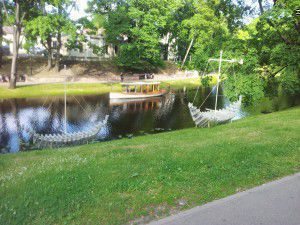
It’s a ‘shoes off’ culture so be prepared to bare feet the moment you arrive in a hostel or home. Also be prepared for the supermarkets to stop selling alcohol around 7:30. Stock up, early!
The traffic lights can be very quick changing so do not dawdle. You’ll be alerted by a series of beeps. When the beeper beeps, get going!
There is a great central market and if you go inside there are a lot of stalls selling local fare. Prepare to put on weight. It is pastry-central here. I haven’t tried savoury Latvian food yet, but that day will come.
Whilst English is not spoken everywhere, the locals are used to the poorly multi-tongued English speaker, and are patient and on the whole very kind.
It’s too soon to tell but I imagine a week would be an adequate length of time to see everything there is to see of Riga. But, since I’ll be here for a while yet, perhaps I can provide a little more detail on that in the near future.
But until then, and until I sample the local beer… Priekā! (cheers)
Kelly
10 reasons to visit… Stockholm
When I first started planning my trip to Stockholm, I didn’t know exactly what to expect. I’d heard from everyone that went there that it’s a beautiful place, but had no specifics so I thought I’d do a bit of research – I’m an avid planner so I enjoyed the planning of the trip every bit as much as the trip itself. Below are 10 reasons why you should consider this great Scandinavian city as your next holiday destination.
1. Gamla Stan
This is the first thing you’ll find online about Stockholm. It’s the old centre of the city and is located on a small island. Actually, Stockholm is formed from more islands split by canals but they are very well interconnected. This district is a really special part of the city with colourful architecture, narrow streets paved with cubic rock, tall churches and last but not least, great cafés and restaurants. Just put down the map and get lost on the lovely streets, looking everywhere around you. When you get tired, have a break at Fabrique – amazing coffee and pastry.
2. Pastry
Oh, Swedish pastry. I intoxicated my Facebook friends for the whole length of my trip with photos of the delicious pastries that this country makes. If you have to try something from the Swedish cuisine, ditch the IKEA meatballs and go for the great, cinnamon or nutty tasting pastry. Have it at breakfast, with a creamy coffee (what the Swedes call ‘fika’) – guarantees a great start of the day. What am I talking about, have it any time you want and try ALL the varieties.
3. Observatorielunden
For a nice view over the city, go to Observatorielunden – it’s a park on a hill next to the Old Stockholm Observatory. From there, take a nice walk through Norrmalm’s streets, it’s a lovely area with shops both local and international. For a coffee break, go to Espresso House on Drottninggatan, one of the best decorated places I’ve ever been – great coffee and tea too!
4. Hammarby Sjöstad
Roughly translating as Hammarby Sea City or Hammarby Lake City, this is a very modern and new area of Stockholm and is part of the Södermalm district. Go there in the morning or even afternoon, perhaps to see the sunset as the area is surrounded by water and canals. You can then take the boat to return to the centre.
5. Skansen
Skansen is the world’s first open-air museum, founded in 1891. Here you can stroll through five centuries of Swedish history, from north to south, with a real sense of the past all around in the historical buildings and dwellings, populated by characters in period dress – according to their website. It was a really great place to see, especially as it started snowing while we were there – a very good reason to refugee in an old style café and have home-made pastry and sweets.
6. Swedish people
They have a lot of style, that is for sure. That reflects in their clothes, shoes, bags, decoration and anything that involves design, really. They are discreet, not very outgoing but friendly. If you are the kind of person that likes to get to know the locals you will have to put some active effort into it – try renting a room in a flat hosted by locals.
7. The Stockholm City Hall
The City Hall has an interesting building (with an interior garden) and location, next to Stadhusparken, which is a park surrounded by water. As long as you are there, check out the Radisson Blu Waterfront Hotel; it looks very cool.
8. Rosendals Trägård
Next to Skansen is Rosendals Trägård (Rosendal’s Garden) – an open garden, which wishes to present biodynamic (organic) garden cultivation. We didn’t get to go there, but apparently they have a café, plant shop and bakery, so what’s not to like?
9. Södermalm
One of the hipster districts of Stockholm, with a creative and relaxed vibe, offering a variety of Swedish fashion shops, vintage stores, galleries and design stores as well as well decorated cafés and bars. Here are also two of the best viewpoints in the city: Fjällgatan and Monteliusvägen.
10. Architecture
All around the city, I never laid my eyes on an ugly building. The Swedes have a great sense of what looks good and that reflects in everything. Interesting colourful buildings, wonderfully refurbished old ones. We particularly found the roofs worth a look at so if you are into that, be careful not to trip while looking up all the time.
Blend in with the locals – learn Swedish with uTalk so you can order pastry and coffee or even just to say ‘hello’ or ‘goodbye’. Everyone in Stockholm speaks very good English, but nothing compares with the feeling of seeing that smile on their faces when you use the local language in a casual conversation.
Ioana
